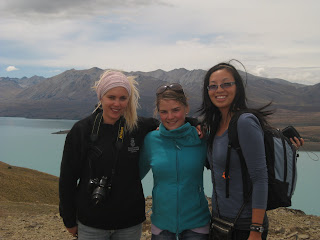Getting there was half the adventure, of course, especially when we did the 24 hour drives to Florida. It was those trips that instilled my love of road trips today. Sleeping in the airport because we left the car keys in another suitcase, getting food poisoning in the car and throwing up all over my sister's Berenstein Bears books, locking the keys in the van a thousand kilometres away from home, all of these instances were the beginning of my disaster travels.
We learned a lot of life lessons while we were on the road. Traveling with a family of five is expensive - I now see the logic in my father having us choose whether to stay in a motel or have a nice breakfast (breakfast won and we slept in the parking lot of Walmart). Traveling also builds character. We always had a full itinerary for every city which we covered mostly on foot, often walking for hours each day. Taxis and other forms of transport that required paying were not an option. Sometime we were allowed to bring friends on these trips - friends that wore platform thong sandals - and they learned this the hard way. I also learned about the logistics of traveling. Even at the ages of 5, 7 and 10, respectively, my father had us converting US to CDN currencies to see if activities we wanted to do fit into a pre-determined budget.

Gradually though, as we grew up, got summer jobs, moved to different cities, the trips became less and less frequent. Dad discovered sailing, and soon every possible weekend, weather permitting, he and my mom were either at 'the cottage' where we stored the family sailboat or exploring nearby lakes. But there are only so many bodies of water in southern Ontario and the opportunity for sailing has maximum a 5 month window each year. My father wanted to do more, he wanted something bigger, more of a challenge.
Which brings me to this post. About a month ago, my parents packed up their belongings, purchased a 46 ft ocean-going sailboat and started a journey around the world.
How cool is that?
They started in Turkey, then continued to Cyprus and the last I heard they had arrived safe and sound in sunny Syria. My parents are giving blogging a try, and you can follow their travels at http://3riverscruising.blogspot.com/
Happy fathers day! To my dad, who continues to inspire me everyday :)































